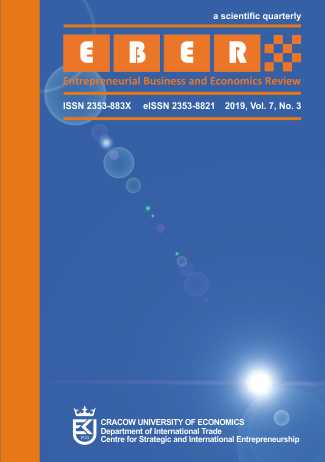Human Capital and the Internationalisation of SMEs: A Systemic Literature Review

Abstract
Objective: The article aims to systematise the literature on human capital for the internationalisation of SMEs.
Research Design & Methods: The research adopts the quantitative and qualitative analysis of scientific papers. Quantitatively, the study is grounded on the classification approach of prevailing literature. Qualitatively, the study adopted a content analysis of scientific papers.
Findings: The classification of scientific literature on human capital and the internationalisation of SMEs has led to the framework of prevailing studies and future research agenda.
Implications & Recommendations: The obtained results indicate that additional studies are needed on human capital and the internationalisation of SMEs, especially in the context of developing and emerging countries. There is an opportunity to investigate service sectors, especially technology-intensive firms. Future studies have to consider the organisational level human capital and include the variables capturing all aspects of human capital. There is an opportunity to investigate the contribution of on-the-job training to the development of human capital and consequently the internationalisation of firms. Finally, the application of case studies and/or interviews and qualitative methods are needed for deeper understanding of human capital and the internationalisation of SMEs.
Contribution & Value Added: The research contributes to the scientific perception of consolidation between human capital and the internationalisation of SMEs by reviewing systematically papers published in the period of 26 years and included in Clarivate analytics/Web of Science and Scopus databases.
Keywords
human capital, internationalization, SMEs, literature review, Clarivate analytics/Web of Science, Scopus
Author Biography
Monika Buzavaite
PhD tudent, Department of Management, Business Management Faculty
Renata Korsakiene
Professor, Department of Management, Business Management Faculty
